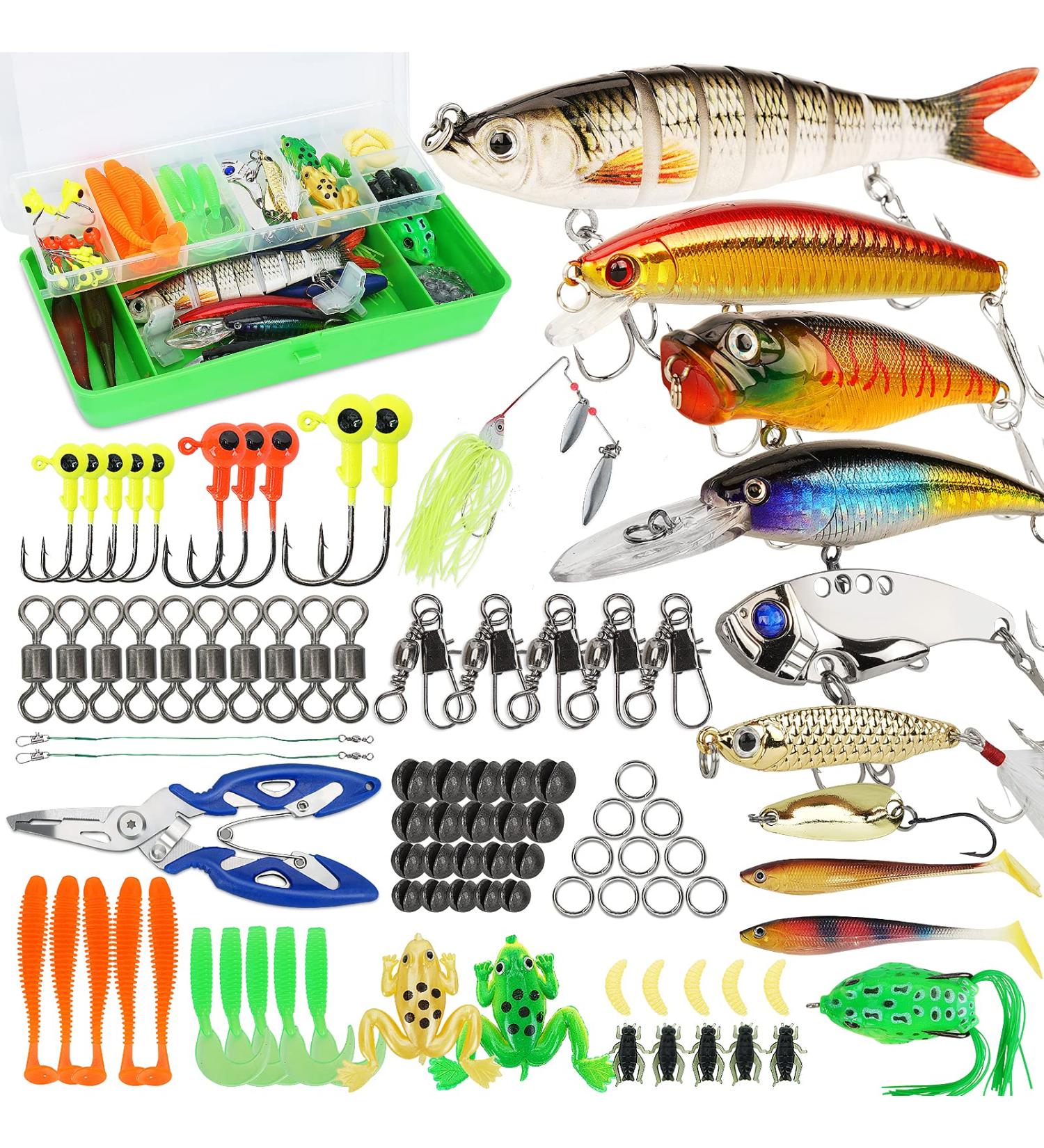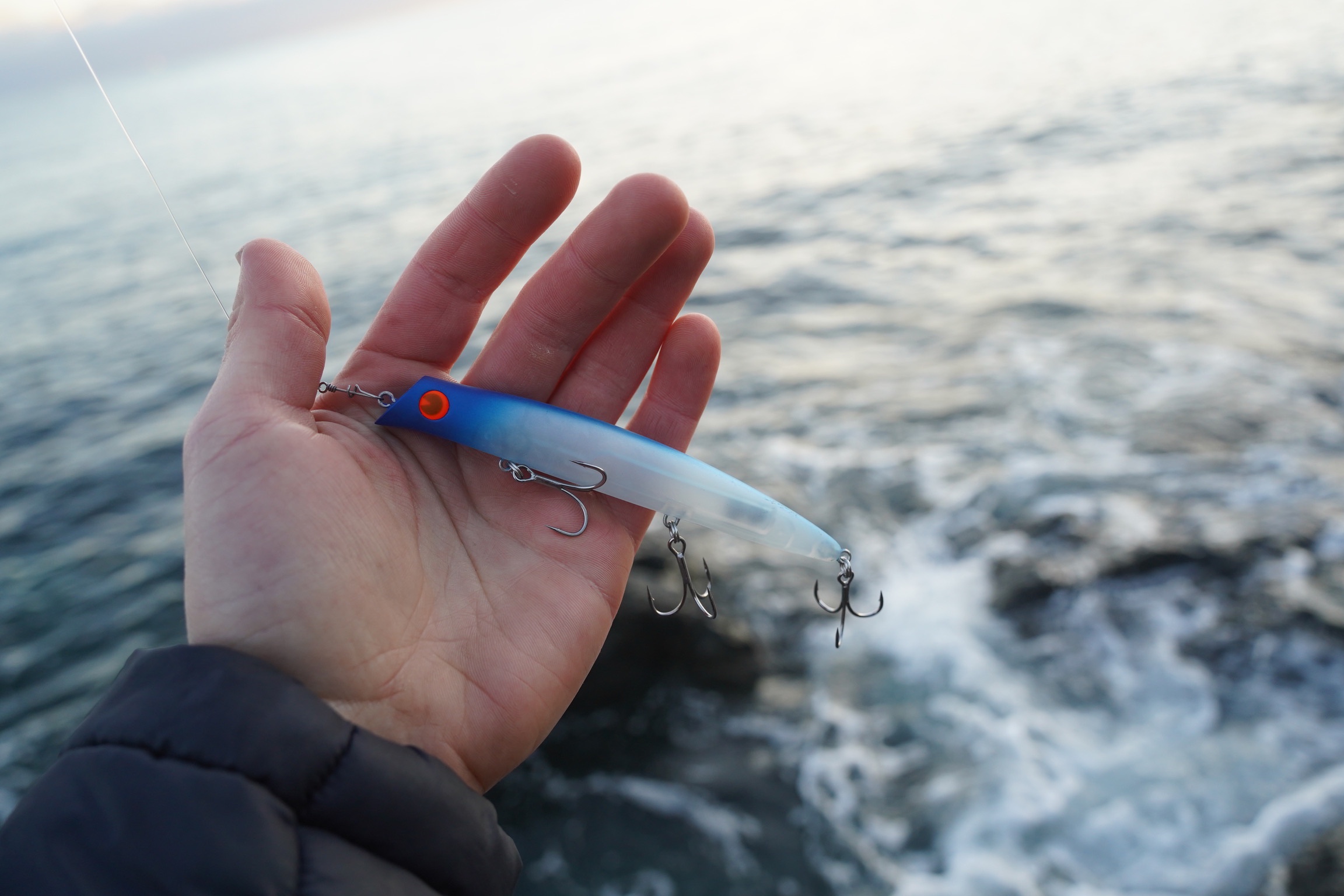Choosing the Best Bass Fishing Lures for Spring, Summer, Fall, and Winter
Wiki Article
Discover the very best Techniques for Choosing Bass Lures for Your Following Fishing Expedition
Choosing the appropriate bass Lures can considerably impact angling success. Fishermens should think about various factors, such as seasonal patterns and water clearness. Comprehending bass actions is crucial (Bass Lures). Selecting Lures that imitate natural target can result in much better results. Numerous are unclear concerning the best techniques to apply. What strategies should one prioritize to enhance their fishing experience? The responses lie in examining certain conditions and adjusting accordinglyComprehending Bass Behavior and Environment
Understanding the subtleties of bass behavior and environment is important for any fishermen aiming to improve their angling success. Bass are usually discovered in different settings, including storage tanks, rivers, and lakes, where they seek framework such as submerged rocks, plant life, and fallen trees. Their actions is heavily affected by water temperature level, light levels, and available forage.Throughout warmer months, bass have a tendency to be a lot more energetic, typically inhabiting shallower waters, while in colder months, they pull back to deeper locations. In addition, bass exhibit patterns of feeding, typically being extra aggressive throughout dawn and sunset. They are opportunistic killers, victimizing smaller sized fish, pests, and crustaceans. Understanding these variables can assist anglers recognize prime angling areas, as well as the finest times to fish. Recognizing bass behavior in connection to their habitat is critical for effective fishing, directing anglers in making informed decisions about where to cast their lines.
Matching Lures to Seasonal Issues
As fishermens adjust their methods to changing seasons, matching Lures to seasonal conditions ends up being an important technique for improving angling success. In spring, when bass are arising from winter season inactivity, fishermens frequently make use of spinnerbaits and shallow-running crankbaits to imitate the activities of target. Summer season demands a shift to topwater Lures or soft plastic worms, as bass look for color and cooler waters. Throughout the fall, when bass are fattening up prior to winter months, bigger Lures that imitate baitfish can be effective. Winter months requires a more refined technique; jigs and slow-moving finesse lures commonly produce better outcomes as bass become tired. Recognizing these seasonal patterns assists anglers pick the ideal attractions, thereby increasing their possibilities of an effective catch. By lining up appeal options with the natural habits of bass throughout the year, anglers can optimize their angling experience and enhance their overall success on the water.The Relevance of Color Choice
Color option plays an essential role in bass angling, as it can considerably influence a fisher's success. Aspects such as water quality, seasonal changes, and the certain choices of various bass species all influence which colors are most efficient. Understanding these aspects permits anglers to make educated selections that enhance their angling experience.
Water Clarity Factors To Consider
When the water clearness differs, choosing the right bass appeal color becomes vital for drawing in fish. In clear water, natural shades such as shad or bluegill patterns have a tendency to be extra efficient, as they mimic the prey bass are accustomed to seeing. Alternatively, in dirty or discolored water, brighter colors like chartreuse or fire tiger can boost presence, making it less complicated for bass to spot the attraction. The comparison in between the appeal and the surrounding environment plays a significant function in angling success. Fishermens must also think about the moment of day; lighter shades might work much better in brilliant sunlight, while darker hues can be a lot more reliable during low-light problems. Adapting appeal color to water quality optimizes the chances of an effective catch.Seasonal Color Patterns
Just how do seasonal adjustments influence bass actions and attraction efficiency? As temperature levels change throughout the year, bass change their feeding habits and preferred environments, making shade selection important for effective fishing. In springtime, when bass spawn, bright colors like chartreuse can draw in focus. Summertime often ask for even more all-natural colors, such as green pumpkin or shad patterns, as bass look for to assimilate with their surroundings. During fall, vivid shades like orange and red resemble the transforming foliage, enticing bass as they plan for winter season. In winter, restrained tones such as white or gray may be extra effective, as bass end up being tired. Ultimately, understanding seasonal color scheme allows fishermens to select Lures that resonate with bass's existing actions, boosting their opportunities of success.
Species-Specific Preferences
Understanding species-specific choices is vital for anglers seeking to enhance their appeal choice. Different bass varieties, such as largemouth and smallmouth, show distinct shade choices based upon their habitat and feeding habits. Largemouth bass frequently favor darker shades, especially in dirty waters, where shades like dark and black green resemble natural victim. On the other hand, smallmouth bass are more most likely to reply to brighter colors, such as chartreuse and orange, particularly in clear waters. Furthermore, water clearness and light problems can affect these preferences, making it essential for anglers to adjust their lure color as necessary. By considering these species-specific preferences, fishermens can enhance their opportunities of an effective fishing trip, ultimately boosting their total experience on the water.Selecting the Right Tempt Kind for Different Situations
Choosing the suitable attraction type for various angling circumstances is critical for success on the water. Anglers should consider elements such as water clarity, weather conditions, and the bass's feeding practices. For dirty water, darker-colored lures, such as spinnerbaits or jigs, can be efficient, as they develop a solid silhouette. In clear water, natural-colored Lures like soft plastics or topwater baits may entice careful bass.When fishing in heavy cover, using heavy jigs or weedless rigs can aid browse through barriers without getting. On the other hand, open water circumstances might take advantage of crankbaits or swimbaits that can cover greater distances. Furthermore, during cooler months, slower-moving Lures often tend to be more efficient, while warmer problems might require faster retrieves. By adapting attraction options to certain environments, fishermens boost their opportunities of a successful catch.
Experimenting With Dimension and Action

Fishermens typically explore a series of dimensions and activities to figure out what works best under differing problems. A slow-moving, subtle activity could be perfect in colder water, while a quickly, hostile fetch can be much more efficient in warmer temperature levels. By thoroughly observing the bass's responses to these variations, fishermens can refine their approach and increase their opportunities of an effective catch. Ultimately, the appropriate combination of dimension and action can make a significant difference on the water.
Reading Water Conditions for Better Entice Options
Understanding water problems is crucial for selecting the right bass attraction. Variables such as water clearness and temperature level can dramatically affect fish actions and feeding patterns. By analyzing these conditions, anglers can make enlightened choices that improve their possibilities of an effective catch.Evaluating Water Clearness
Exactly how does water clarity affect the performance of bass lures? Water clearness considerably affects bass habits and the exposure of lures. In clear water, bass have a tendency to be much more cautious, making natural-colored Lures more reliable as they resemble target carefully. Anglers may select lighter, subtler colors to prevent startling fish. On the other hand, in dirty or tarnished water, more vibrant and more vibrant shades stick out, drawing in attention also in reduced visibility problems. Furthermore, the sort of lure can differ; slower-moving Lures may work better in clear water, while much faster, a lot more hostile presentations can attract bass in murkier environments. Comprehending the clearness of the water enables anglers to pick Lures that optimize their opportunities of success throughout their angling trips.Comprehending Water Temperature
As water temperature changes, it straight affects bass habits and their feeding patterns, making it essential for fishermens to think about when selecting appeals. Usually, bass favor warmer temperatures, normally between 65 ° F and 75 ° F, where their metabolic rate is increased, causing increased feeding task. In cooler water, bass become inactive and might prefer slower-moving attractions, such as jigs or soft plastics. Conversely, throughout Best Bass Lures warmer months, faster discussions like crankbaits or topwater Lures can be much more effective. Anglers must additionally think about seasonal adjustments; as an example, spring warming brings about aggressive feeding as bass prepare to spawn. By recognizing how temperature level influences bass, anglers can make educated choices on appeal selection, dramatically enhancing their possibilities of success.Tips for Organizing and Preserving Your Tempt Collection
While many anglers concentrate on picking the appropriate Lures for their next fishing expedition, arranging and keeping a lure collection is similarly vital for enhancing efficiency and performance. A well-structured collection permits fishermens to rapidly find the Lures they need, lowering time spent searching through take on boxes.To begin, fishermens must classify Lures by kind-- crankbaits, jigs, or soft plastics-- making it easier to find specific options. Utilizing tackle trays or boxes with adjustable compartments can help maintain every little thing arranged. Identifying containers simplifies the procedure better, helping fast recognition.
Routine maintenance is also important; anglers should inspect Lures for indicators of wear, such as rusted hooks or harmed paint, and replace them as required. Cleaning Lures after each journey stops damage and makes certain long life. By carrying out these business and maintenance strategies, fishermens can improve their fishing experience and ensure their Lures are constantly in ideal condition.
Regularly Asked Concerns
What Are the most effective Brand Names for Bass Lures?
The finest brands for bass Lures include Rapala, Strike King, and Berkley. These brand names are renowned for their technology, efficiency, and quality, appealing to both amateur and knowledgeable fishermens looking for effective fishing experiences.The Amount Of Lures Should I Tackle a Trip?
A normal fishing journey should include around 5 to ten appeals, enabling convenience while preventing mess. This choice needs to include numerous types and shades to adjust to changing conditions and fish choices.Can I Make My Own Bass Lures?
Yes, people can make their very own bass Lures using different materials and methods - Bass Lures. Crafting Lures enables for modification, making it possible for anglers to explore shades, dimensions, and forms to suit details angling problems and choicesWhat's the Typical Life-span of a Bass Draw?
The average life expectancy of a bass attraction differs, generally lasting from a couple of months to numerous years, relying on worldly quality, usage frequency, and environmental conditions. Proper care can considerably prolong an appeal's use.Exist Certain Lures for Night Fishing?
Yes, there are specific Lures designed for evening angling. Dark shades and Lures that generate resonances, such as spinnerbaits or jigs, commonly bring in bass in low-light problems, improving exposure and activating predative reactions.Alternatively, in murky or stained water, brighter colors like chartreuse or fire tiger can improve presence, making it less complicated for bass to discover the appeal. Bigger Lures can attract larger bass, while smaller Lures may be much more effective for catching smaller sized fish. Furthermore, the kind of attraction can vary; slower-moving Lures could work much better in clear water, while quicker, more aggressive presentations can entice bass in murkier settings. As water temperature fluctuates, it straight affects bass habits and their feeding patterns, making it essential for fishermens to think about when picking attractions. While numerous fishermens focus on picking the best Lures for their following fishing journey, organizing and preserving an appeal collection is similarly vital for improving performance and performance.
Report this wiki page